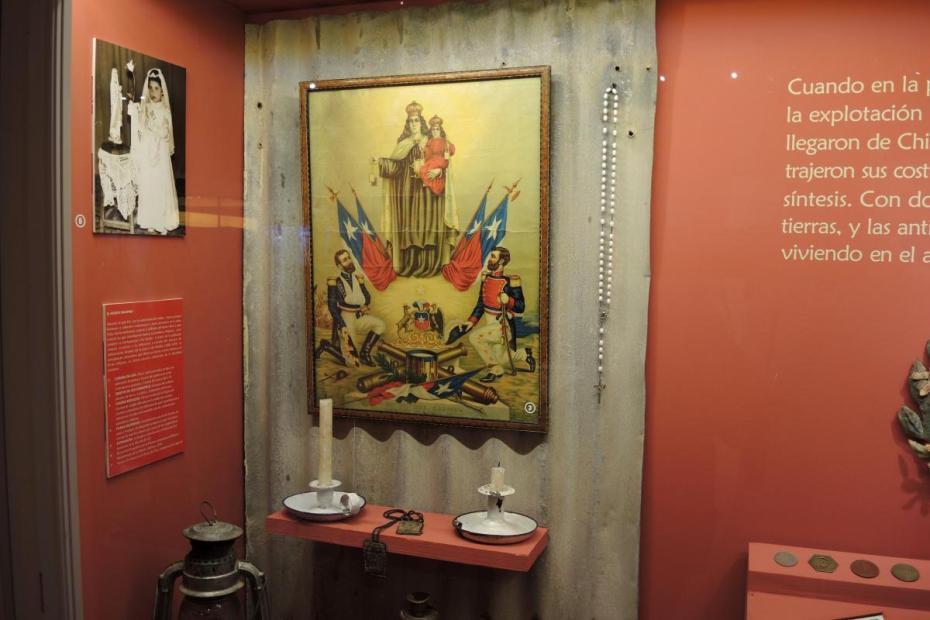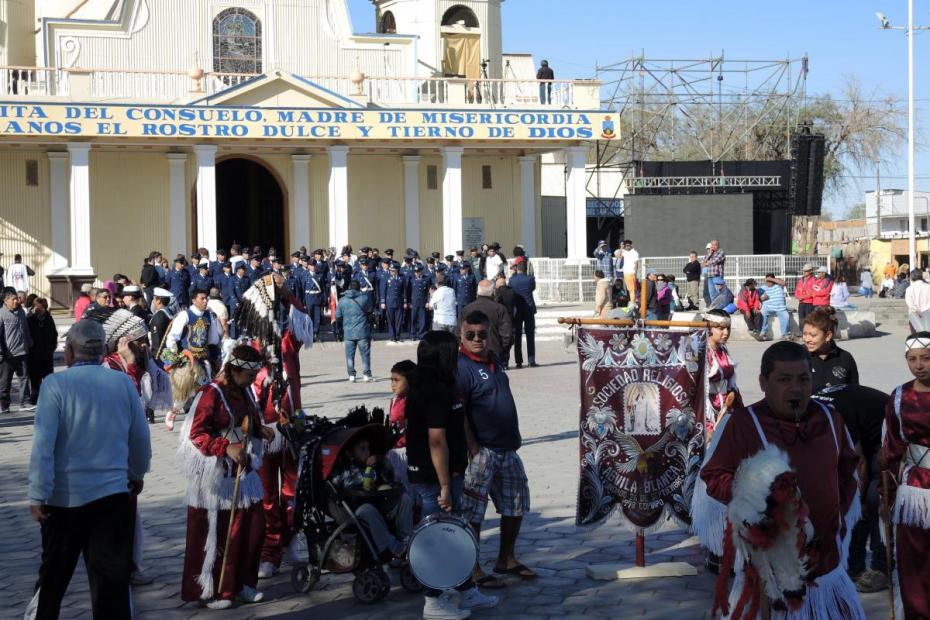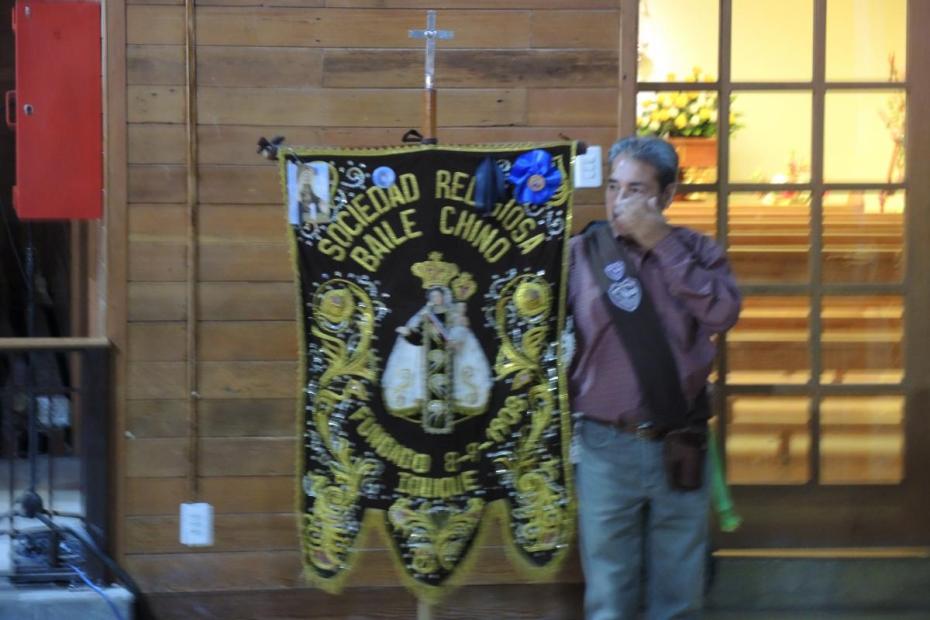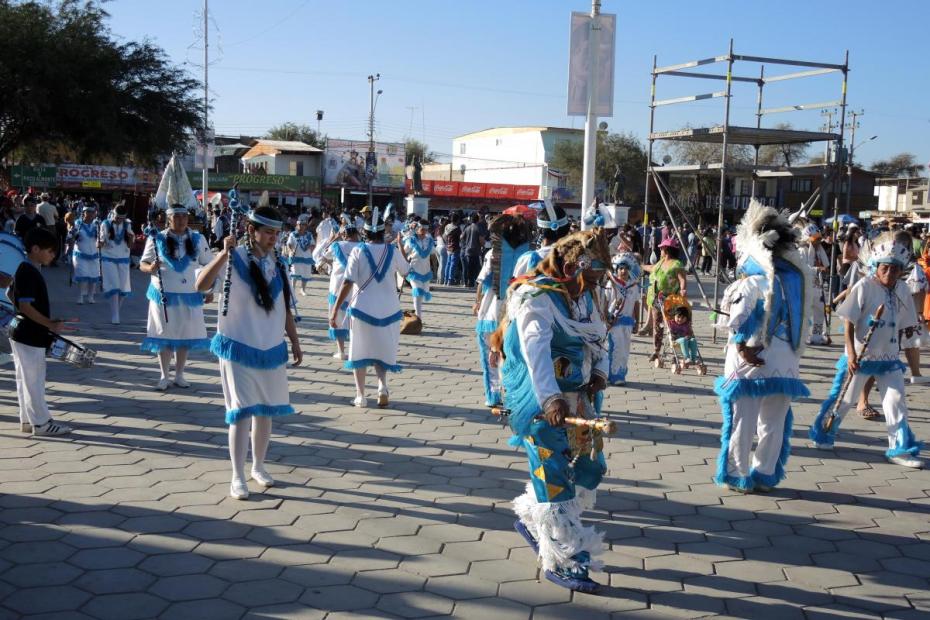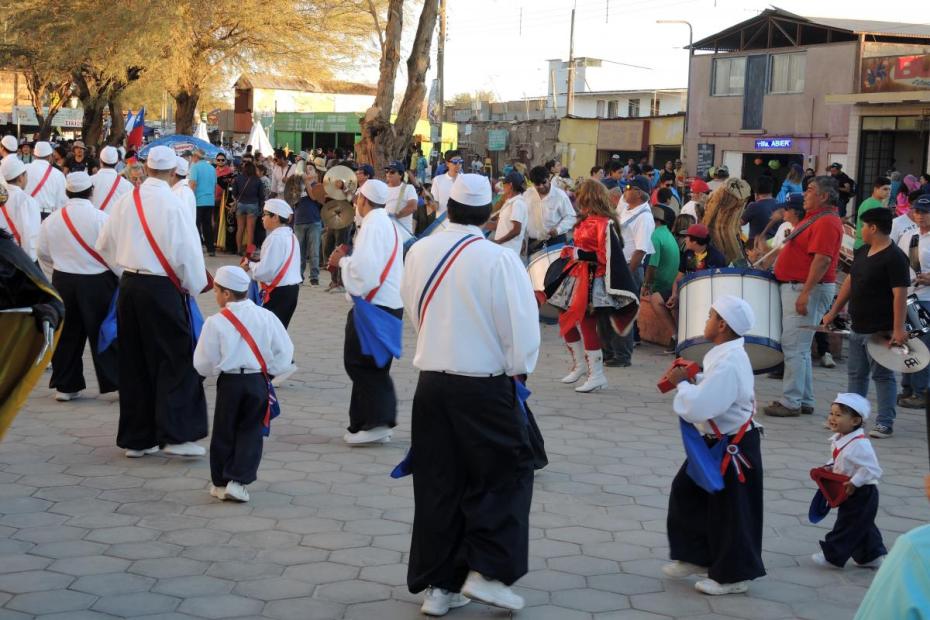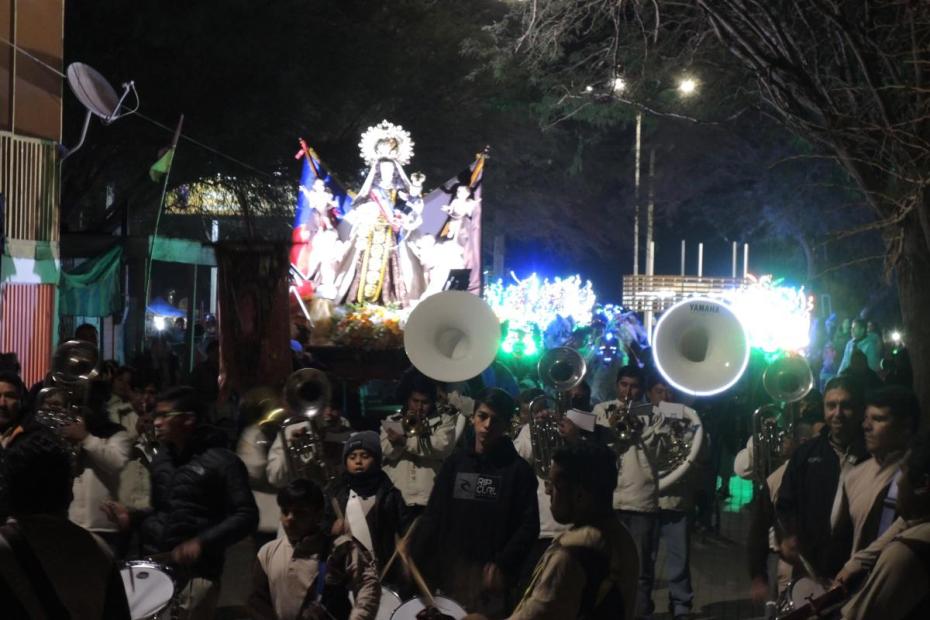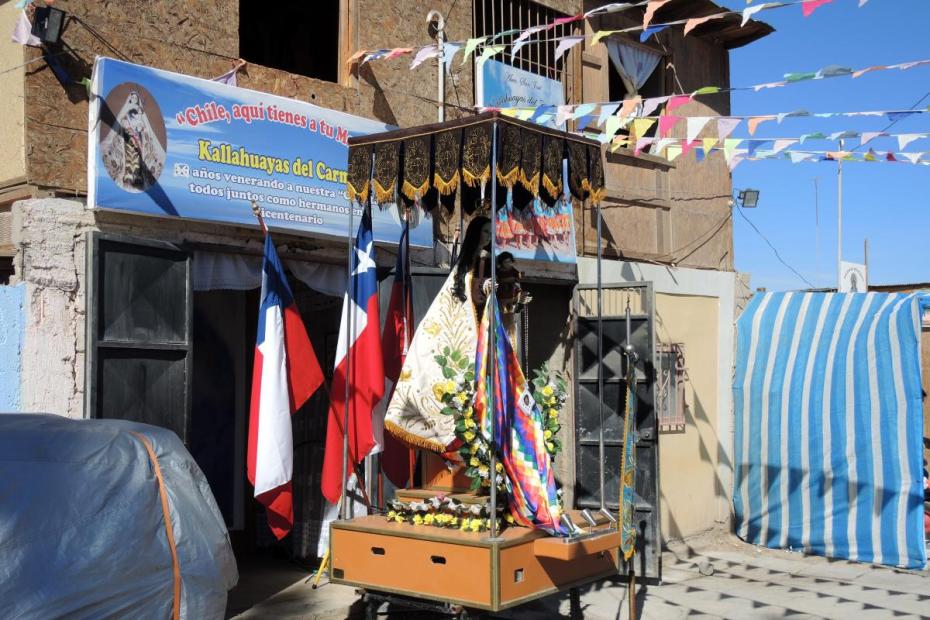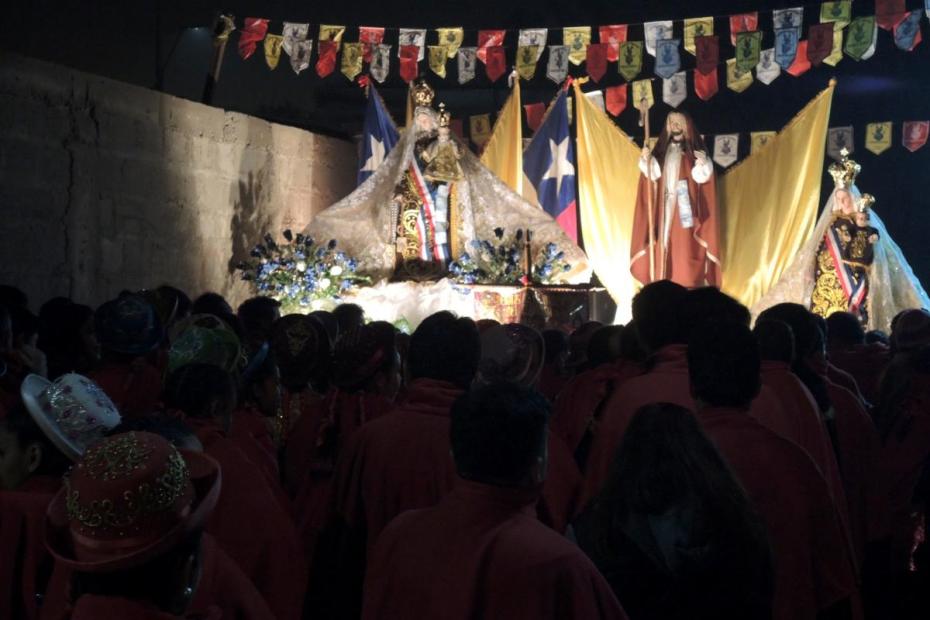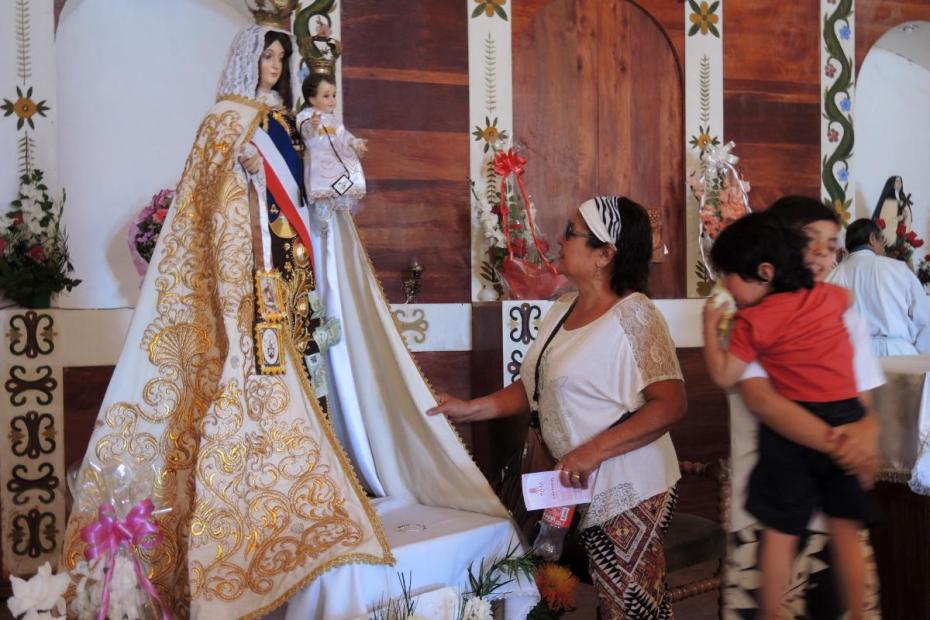The tradition of religious dance at La Tirana has both indigenous and Spanish roots. The people of the region have been dancing to celebrate religious events for many centuries. Pre-Columbian devotion to the Pachamama, a powerful feminine deity of Andean peoples, converged with Spanish Catholic Marian devotion to foster a religiosity that has assured Mary a particularly central place in Catholic life.
The town's namesake is “the tyrant,” Ñusta Huillac, an Incan princess who is said to have converted to Catholicism and then been killed at the time of the Spanish conquest. A church was built there much later on the purported site of her burial, but was ruined in an earthquake in 1866, after which it was rebuilt in the current location.
The region’s history was radically changed with the advent of nitrite mining in the 19th century. The lands in this part of Chile, previously part of Peru and Bolivia, were taken over by Chile in 1883 at the end of the War of the Pacific, a war fought largely over nitrite rights. Nitrite mines were scattered throughout the desert, and were a primary source of wealth and jobs in an otherwise unforgiving land. Before the war, Chuncho, Cuyaca, Moreno and Llamero dance groups danced there on August 6 each year. Dances for the Virgin took place at many sites in that era (and still do) but La Tirana became, in the late 19th century, a site with a large number of dances. Under a process of Chileanization after the war, the feast was tied to — and transformed by — Chilean nationalism, and transferred to the feast of the Virgen del Carmen, “patroness of Chile and generalissimo of the Chilean Army.”1 The Chilean military became part of the festivities, and the Virgin was draped in a sash with the red, white and blue of the Chilean flag. Even the introduction of military brass and drums to the dances of many bailes is sometimes said to have been a legacy of that process of nationalization.2
After the disruptions of the 19th century, the 20th century was a time of “refounding” of the bailes, from loosely organized family networks to more formally structured entities.3 The oldest of the bailes were formally incorporated early in the 20th century, and the date of their incorporation is always noted on their banners today. The Baile Chino Society of Iquique claims a 1908 incorporation, and thus has a place of honor in several processions because of its position as the oldest baile. By 1917, when the church began to allow them to dance within the temple, there are records of 10 bailes, including Chinos, Chunchos, Morenos, Cullaves, Lacas, and Callahuayes.4
The local nitrite business collapsed by World War II and never revived, and many of the miners and their families moved to Arica, Iquique and Antofagasta along the coast. (Other, smaller dances in many defunct towns in the desert foothills of the Andes draw other bailes each year. Of 114 dance groups in Arica, for example, 39 go to La Tirana, and the rest are dedicated to an array of other dances.)
Another powerful source of transformation came from life at the mines, where company towns were often substantial, modern communities. However powerful and enduring the indigenous legacy of perceiving dance as a form of prayer, a good many of the particular forms of dance at La Tirana seem to have been created in the 20th century, borrowed from Bolivia, or, most astoundingly, borrowed from Hollywood movies shown in the mining communities generations ago. Dancers, and bailes leaders now in their 70s, enjoyed telling stories of how workers in the nitrite mines near La Tirana were shown films of cowboys and Indians in the 1930s and ’40s and identified with the Native Americans. It was obvious who the winners and losers were in these movies, they said, and “the ‘losers,’ the Indians, looked like us.” They appropriated this Hollywood version of Native American life, identifying both with their shared indigenous status and with their subordinate status. Grainy footage of La Tirana from 1944 shows many of the dances and costumes one sees today, including Native American-garbed dancers.5
Most of the dancers at La Tirana today identify themselves as descendants of those nitrite-mining pampas dwellers, but it seems clear (and is in many ways visible at the dances) that the communities of the region were, a century ago, mestizo communities. “The depth of lineage of the families of the nitrite mine deserts is short,” apparently even for the people of native origin, who often came to these lands from elsewhere. In a late 19th-century census, 43.7% were considered Indians, 35.1% whites, but 37 nationalities were represented overall.6 The bailes as we know them were built on heritages and ways of praying and being that predate this era, but were clearly rebuilt in this era of mixing, and of outside influences.
Older interviewees remembered a time when they had to bring all of their own water to La Tirana, and traveled on benches in the back of the same trucks as their supplies. Almost everyone traveled in trucks, with no national paved highways and arrived dusty but eager to dance.
The bailes were invited, or allowed, to dance in the sanctuary (rather than simply in the streets) at La Tirana in 1917, under rules similar to those today,7 but in cities like Arica, they struggled for much of their history for recognition in the church, and were not allowed to dance within the church, or to step in the church in their trajes, or sacred dance costumes, as many recounted it. “We were the ugly duckling of the church,” said one interviewee. Another baile leader claimed that this changed when Pope John XXIII “saw movies of the dances and said that this practice must be respected and supported.” In Arica, relations between the bailes and the church started to improve in 1962, when the Asociación Virgen de la Tirana was formed, and norms were instituted for recognition of bailes. “La Tirana was always different, though” that same man recounted. “We deserve respect, and they [the priests] recognize that [today], that we deserve respect from the church.”
- 1José Javier García Arribas, Los Bailes Religiosos del Norte de Chile o los Danzantes de la Virgen, (Santiago: Seminario Pontificio Mayor, 1989) 148.
- 2P. Nelson Peña Antil, S.J., Bailes Religiosos de Arica: valoración de su historia y tradición (Chile: Procultura: 2015) 39.
- 3A timeline of the history of the devotion at La Tirana is at http://fiestadelatirana.cl
- 4González Miranda identifies their presence by 1917, when they are listed in a publication titled Los Bailes de la Tirana. Sergio González Miranda, “La Presencia Indígena en el Enclave Salitrero de Tarapacá: una Reflexión en Torno a la Fiesta de la Tirana” in Chungara, Revista de Antropología Chilena 38: 1, 2006. 35-49
- 5The first of these appears to have been founded in 1930. Alberto Díaz Araya and Paulo Lanas Castillo, Danza y devoción en el desierto: Obreros e indígenas en la fiesta de la Virgen del Carmen de La Tirana, Norte de Chile (siglo XX) Latin American Music Review 2015 36:2, 160.
- 6González Miranda, “La Presencia Indígena” 37, 38, 43.
- 7González Miranda, “La Presencia Indígena” 44.
